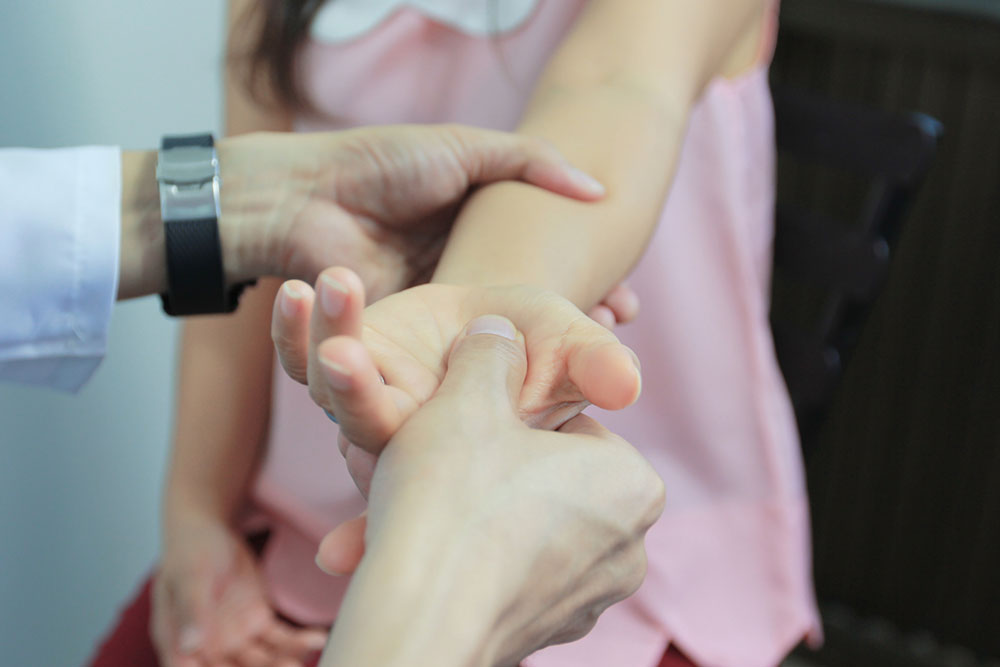Parkinson’s Disease – Symptoms and Management Options
Parkinson’s disease (PD) is a progressive brain condition that is commonly associated with symptoms like slow movements, tremors, balance issues, and more. Although PD generally sets in around the age of 60, it can affect individuals as young as 20. Currently, there are no known cures for this condition, but ongoing research by health experts has resulted in the evolution of certain therapies and surgeries to relieve symptoms and manage the condition.

Symptoms and warning signs
Every individual may experience different symptoms of Parkinson’s. One should be aware of some common warning signs of this condition.
- Slowed movements or bradykinesia
- Tremors, even when muscles are at rest
- Rigidity and stiffness in the body
- Unstable posture or walking gait
- Blinking less often than usual
- Drooling
- Issues in swallowing (dysphagia)
- Mask-like facial expression (hypomimia)
- Cramped or small handwriting
- Unusually soft speaking voice (hypophonia)
- Orthostatic hypotension (low blood pressure when standing up)
- Gastrointestinal problems
- Urinary incontinence
- Loss of sense of smell (anosmia)
- Sleep problems
- Trouble thinking and focusing
Diagnosis
There are currently no specific tests that help detect Parkinson’s. As a result, the diagnostic process is heavily clinical, relying on the doctor’s examination of one’s symptoms, a neurological exam, a physical exam, and a thorough review of one’s health history. The diagnosis of PD is largely based on the presence of two or more symptoms mentioned above and the absence of other neurological signs upon examination.
In some cases, doctors may also recommend a specific single-photon emission computerized tomography (SPECT) scan, also known as a DaTscan, to further support clinical findings. Doctors may also advise blood tests, magnetic resonance imaging (MRI), and other imaging scans to rule out the possibility of other conditions.
Treatment options
Although there is no known cure for Parkinson’s, some new treatments and interventions can help one manage one’s condition to a large extent.
Deep brain stimulation (DBS)
Here, surgeons implant electrodes in the brain to either the subthalamic nucleus, the thalamus, or the globus pallidus. This implantation is guided by MRI and neurophysiological mapping to find the correct location for the implant. The electrodes are then connected to a generator placed in the chest near the collarbone that sends electrical pulses to the brain to reduce Parkinson’s symptoms.
The healthcare team adjusts the settings for these electric pulses. Patients also have a controller that allows them to turn the device on and off. DBS helps rebalance the control messages in the brain, which helps suppress tremors and other motor symptoms.
MRI-guided Focused Ultrasound (MRgFUS)
This is a minimally invasive treatment where the MRI guides the ultrasound to the area in the brain where the tremors start. The high-temperature ultrasound rays burn the areas that cause the tremors.
Surgery
With the progression of PD, it may become difficult to manage the condition with prescription remedies alone. Healthcare professionals may advise surgery in such cases after evaluating one’s current symptoms and overall health. This procedure involves operating on the deep brain structures involved in motion control: the thalamus, the globus pallidus, and the subthalamic nucleus. This is done via stereotactic surgery to relieve symptoms of PD.
Pallidotomy
In less severe cases, a pallidotomy may work wonders. This procedure involves inserting a wire probe into the globus pallidus and applying lesions to restore the balance required for normal movement.
Thalamotomy
People experiencing disabling tremors in the arms or hands will benefit greatly from this procedure, which involves the destruction of a specific portion of the thalamus. But, a thalamotomy will not have any effect on other symptoms of PD.
Experimental treatments
Researchers always look for new treatment options for Parkinson’s management. Doctors may recommend some of the latest experimental treatments for Parkinson’s.
- Stem cell transplants
Embryonic stem cell research is a promising treatment option for patients with PD. It focuses on adding new neurons to replace old ones and slowing disease progression. - Neuron-repair treatments
There is a lot of investment in treatments that can repair damaged neurons and restore their function, which may reduce the intensity of PD symptoms. - Gene therapies and gene-targeted treatments
At least seven different genes have been linked to an increased risk of PD. For this reason, experts are focused on developing gene therapies and gene-targeted treatments that focus on these specific mutations and reduce the progression of Parkinson’s.
Management strategies
In addition to formal treatment, some lifestyle changes and management strategies can help manage the condition.
- Adding foods that slow down disease progression, such as high-fiber foods, plenty of fluids, and omega-3 fatty acids to one’s daily meal regime.
- Exercising regularly can benefit muscle strength, flexibility, posture, and balance. Try to include walking, gardening, dancing, water aerobics, or stretching in one’s daily routine.
- Working with a physiotherapist to address muscle stiffness and joint pain through movement and exercises.
- Reaching out to an occupational therapist to identify and ease problems in daily living, such as dressing up, eating, writing, etc.
- Getting the help of a speech and language therapist to reduce swallowing difficulties and problems with one’s speech.
- As the condition worsens, one may lose one’s ability to balance, increasing one’s risk of falls. To avoid this, try to make a U-turn instead of turning on the heel, do not carry things while walking, and do not walk backward.


